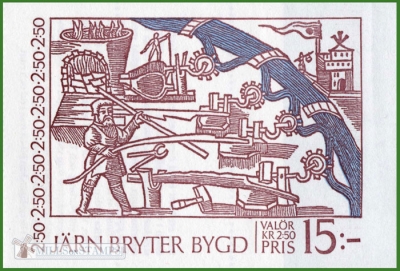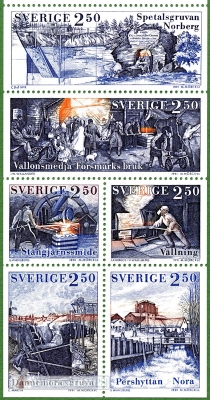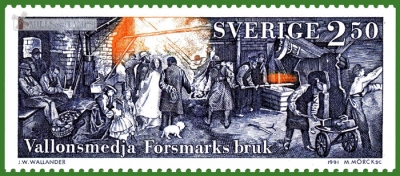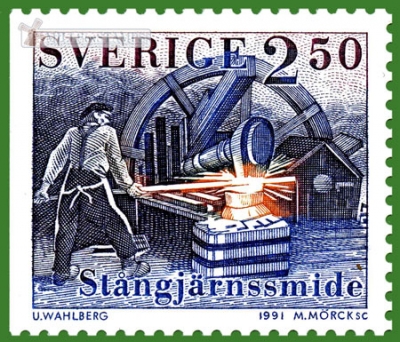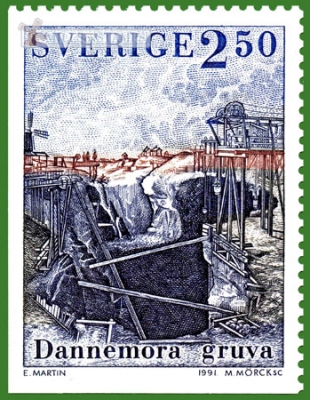-
Iron mining
Sweden 1991.08.27
In issue: Stamp(s): 6 Booklet(s): 1
Printing: engraving
Issued in: booklets as one set
-
Number by catalogue: Michel: MH162 Yvert: C1656 Scott: 1903a
Perforation type: 12 ¾x12 ¾
Subject:
The booklet includes 6 stamps of 2.5 krones with plots from the ancient engravings narrating about the main places iron mining of the Past.
On a cover of the booklet also there are water wheels of mills.
Topics: Mills within the landscapes Various Watermills Windmills
-
Number by catalogue: Michel: 1679 Yvert: 1657 Scott: 1899
Subject:
At the stamp depicts the interior of a water mill-smithy in Forsmark*
Additional:
*Forsmark is a village with 59 inhabitants on the east coast of Uppland, Sweden. It is most known as the location of the Forsmark Nuclear Power Plant.
Because of the sensitive instruments located in the nuclear power plant for the purpose of detecting local leaks, Forsmark was, on April 27, 1986, the first place outside the Soviet Union where the signs of the Chernobyl accident became apparent. When workers at the plant were found to carry radioactive particles, the origin of the leak was investigated and it eventually became clear that the contamination came from the atmosphere rather than from the Forsmark plant itself.Forsmark formerly had an ironworks producing oregrounds iron.
Topics: Various Watermills
-
Number by catalogue: Michel: 1680 Yvert: 1658 Scott: 1900
Subject:
Ironworks forge
Topics: Various Watermills
-
Number by catalogue: Michel: 1682 Yvert: 1660 Scott: 1902
Additional:
*Dannemora is an old mining town (pop. 240) in Östhammar Municipality, Uppsala County.
Dannemora is the location of an important iron ore mine, which formed the basis of the iron industry in Uppland. It provided the raw material for about 20 finery forges that produced bar iron for export. In England, iron produced from Dannemora ore, was known as oregrounds iron, after the port town of Öregrund. It was considered the best raw material for producing blister steel by the cementation process.
In 1878 a narrow gauge (891 mm) railway was opened to the port in Hargshamn, and iron ore started to be exported directly.
The mine was closed down in 1992. With world market demand rising, the feasibility of reopening the mine is being investigated (as of May 2008).Old engraving by J.F. Martins with view of Dannemora of 1800 in the stamp was used

Topics: Mills within the landscapes Windmills


